- Books Name
- Social Science Book
- Publication
- Cognizance Publication
- Course
- CBSE Class 7
- Subject
- Social Science
Stereotypes
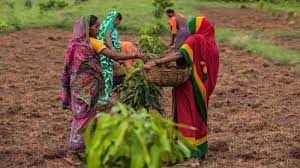
83% of working women in India are engaged in agricultural work . Their work includes planting, weeding, harvesting and threshing. Yet , when we think of a farmer we only think of a man.
Challenges
Fewer opportunities and rigid expectations
People think that men and women are meant to do specific works. The reason they did this is because they feel that outside the home too, women are good at only certain jobs. It is believed that science requires a technical mind and girls and women are not capable of dealing with technical things. Many people believe in these stereotypes. Many girls do not get the same support that boys do to study and train, to become doctors and engineers. In most families, once girls finish school, they are encouraged by their families to see marriage as their main aim in life.
Learning for change
Today it is difficult for us to imagine that's school and learning could be seen as not appropriate for some children. But in the past, the skill of reading and writing was known to only a few. Most children learnt the work where families or elders did. For girls the situation was worse. In communities that taught sons to read and write. daughters are not allowed to learn the alphabet. Even in families where skills like pottery, weaving and craft were taught, the contribution of daughter and women was only seen as supportive. For example, in the potterytrade,woman collected the mud prepared the earth for the pots.But since they did not operate the wheel, they were not seen as Potters.
Breaking stereotypes
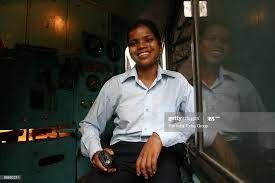
Engine drivers are men. But 27 year old Laxmi Lakra from a poor tribal family in Jharkhand, had began to change things. She is the first woman engine driver for Northern Railways. Laxmi’s parents are not literate, but they struggled and overcome many hardships to make sure that children got an education. Laxmi studied in a government school. Even in school, laxmi help with the housework and did odd jobs. She studied hard and did welland then went on to get a diploma in electronics. She then took the railway board exam and passed it on her first attempt. Laxmi says “I love challenges and the moment somebody says it is not for girls, I make sure I go ahead and do it.” Laxmi has had to do this several times in her life.When she wanted to take electronics, when she rode motorcycle at the Polytechnic and when she decided to become an engine driver.
In the 19th century many new ideas about education and learning emerged. Schools became more common in communities that had never learnt reading and writing started sending their children to school. But there was a lot of opposition to educating girls even then. Yet many women and man made efforts to open school for girls.
Issues
Women struggle to learn to read and write
Ramabai (1858-1922).She championed the cause of women education. She never went to school but learnt to read and write from her parents. She was given the title “Pandita” because she could read and write Sanskrit, a remarkable achievement as women then we're not allowed such knowledge.
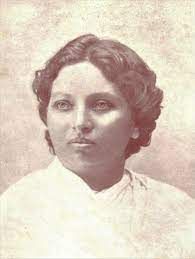
She went on to set up a mission in Khedgaon near Pune in 1898 where windows and poor women were encouraged not only to become literate, but to be independent. They were taught a variety of skills, from carpentry to runninga printing press, skills that are not usually taught to girls even today.
Let us read about the experience of Rashsundari Devi(1800 -1890), who was born in West Bengal some 200 years ago. At the age of 60, she wrote her autobiography in Bangla. Her book, titled Amar Jiban, is the first autobiography written by an Indian woman.
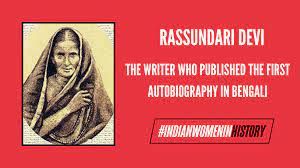
Rashsundari Devi was a housewife from a rich landlord family. At that time it was believed that if a woman learn to read and write, she would bring bad luck to her husband and became a widow. Despite this, she taught herself how to read and write in secret well after her marriage. After learning the alphabet, Rashsundari Devi was able to read the Chaitanya Bhagbat (the life of a Saint). Through her own writing, she also gave the world and opportunity to read about women's lives in those days. Rashsundari Devi wrote about her everyday life experiences in detail. There were days when she did not have a moment’s rest, no time even to sit down and eat.
Schooling and education today
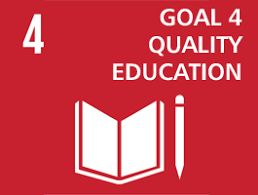
Today, both boys and girls attend school in large numbers. There still remain differences between the education of boys and girls. According to the 1961 census about 40% of all boys and men(7 year old and above) were literate, compared to just 15% of all girls and women.In the most recent census of 2011, these figures have grown to 82% for boys and men and 65% for girls and women. Girls who are from Dalit(SC) and Adivasi(ST) backgrounds are less likely to remain in school. The 2011 census also found that Muslim girls are less likely than SC and ST Girls to complete primary school.While a Muslim girl is likely to stay in school for around three years, girls from other communities spent around 4 years in school.
In many parts of the country, especially in rural and poor areas, there may not even be proper schools nor teachers who teach on a regular basis. If a school is not close to people’shomes, and there are no transportlike buses or vans, parents may not be willing to send their girls to school. Many families are too poor and unable to bear the cost of educating all their children. Boys may get preference in this situation. Many children also leave school because they are discriminated against by their teachers in classmates just like Omprakash Valmiki was.
Solution
Women's movement
Woman and girl, now healthy right to study and go to school. Woman, individually and collectively have struggled to bring about these changes. The struggle is known at the women's movement. Individual woman and women's organization from different parts of the country are parts of this movement. Many men support the women's movement as well. Different strategies have been used to spread awareness, fight discrimination and seek justice.
Campaigning
Campaigns to fight discrimination and violence against women are an important part of the women's movement. Campaigns have also lead to new laws being passed. A law was made in 2006 to give women who face physical and mental violence within their homes, also called domestic violence, some legal protection. Efforts made by the women movement led the Supreme Court to formulate guidelines in 1997 to protect women against sexual harassment at the workplace and within educational institutions. In the 1980s women groups across the country spoke out against “dowry deaths”- cases of young brides being murdered by their in laws or husbands, greedy for more dowry. Women’s group spoke out against the failure to bring these cases to justice. They did so by coming on to the streets, approaching the courts, by sharing information. Eventually this become a public issue in the newspaper and society and the dowry laws were changed to punish families who seek dowry.
Raising awareness
An important part of the women's movement work is today's public awareness on women's rights issues there. Message has been spread through street play, songs and public meetings.
Protesting
The women's movement raises its voice when violations against women take place. Public rallies and demonstrations are a very powerful way of drawing attention to injustices.
Showing solidarity
The women's movement is also about showing solidarity with other women and causes.
8th March is celebrated as International Women's Day. Women all over the world came together to celebrate and renew their struggles.
Every year on 14th August, 7000 people gather at Wagah border of India and Pakistan and hold a cultural program.

 Cognizance Publication
Cognizance Publication
